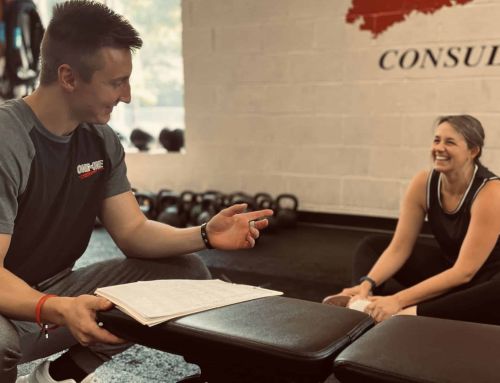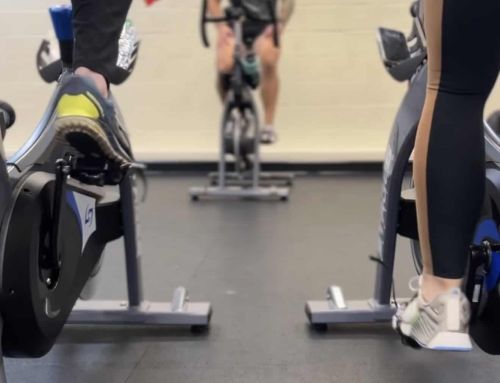
By The One on One Team
Last Updated: 10/19/25
Your Guide to Safe and Effective Bench Pressing
Upper-body strength supports how we live—helping us push, reach, lift, and move with confidence. Whether it’s gardening, playing pickleball, or carrying groceries, feeling strong makes daily activity easier and more satisfying. Maintaining that strength is essential for healthy ageing, supporting posture, balance, and joint integrity. The bench press is an effective exercise for building it, but it must be performed safely to serve its purpose.
When executed correctly, the bench press doesn’t just build chest and arm strength, it reinforces shoulder health. It trains the upper back, shoulder, and chest muscles to work together in a balanced, controlled way. Unfortunately, many people perform the bench press with insufficient control or tension. The result is unnecessary stress on the shoulder joint, leading to irritation, pain, and eventually injury. The goal should never be to push as much weight as possible at the expense of stability. Instead, focus on creating tension and control that allow the shoulders to move safely and powerfully through the full range of motion.
Proper Setup and Execution
Start by packing your shoulders. Draw them back and down against the bench to create stability. From there, keep your back and hips pressed into the bench and plant your feet firmly into the floor.
Lower the weight with control toward your chest while maintaining tension across your chest and upper back. At the bottom of the rep, you should feel a stretch across the chest while the shoulders remain stable. Then, press the weight back up while keeping your shoulders packed and your body pressed into the bench.
Common Technical Errors
Even small breakdowns in form can place the shoulder joint in compromised positions, creating wear and tear instead of strength. The most frequent issues observed include:
- Missing Proper Endpoints
Each repetition has two critical checkpoints: the bottom and the top. At the bottom, you should feel a stretch across the chest while the shoulders remain packed and supported. Stopping short of this point decreases the effectiveness of the exercise and can contribute to a decrease in shoulder mobility. At the top, the elbows should reach full extension without losing shoulder position. This allows for full muscle activation of the chest, shoulders and arms while keeping the shoulder joint stable. - Shoulder Position and Control
Maintaining proper shoulder position is the foundation of a safe and effective press. When the shoulders drift forward or the upper back loses tension—especially at the bottom of the movement—the joint becomes unstable and vulnerable to strain. Keeping the shoulders drawn back and down while maintaining active engagement through the chest, shoulders, and back provides the stability needed to press safely and powerfully. - Inefficient Elbow Position
When the elbows flare too wide or tuck too close to the torso, the shoulder and elbow joints are forced into poor alignment. Both positions increase joint stress and reduce stability. A roughly 45-degree angle from the torso provides the most joint-friendly path and allows the pressing muscles to work in balance.
The Bottom Line
The bench press should strengthen and protect the shoulders—not compromise them. Prioritizing proper setup, maintaining tension through the full range of motion, and staying mindful of joint position turns the movement into one that enhances long-term shoulder health and function.




